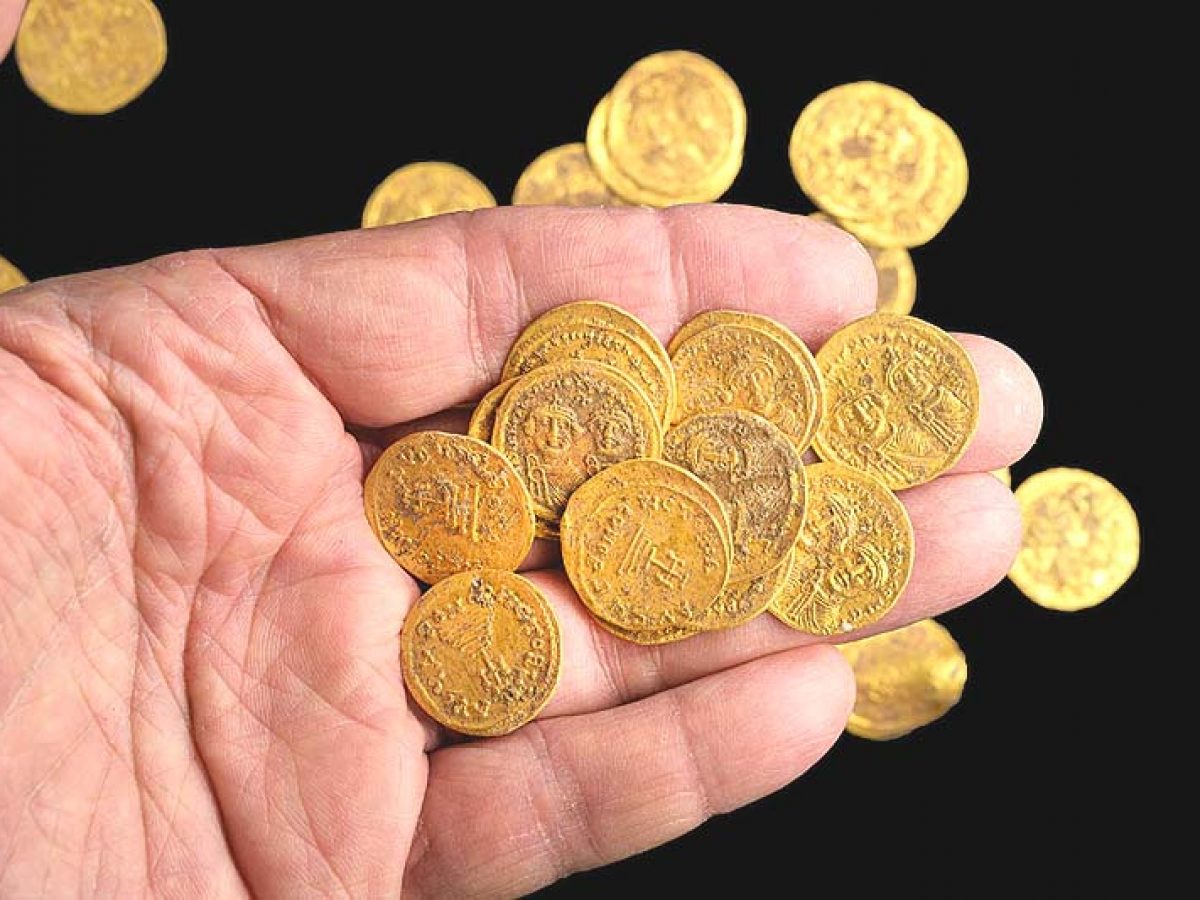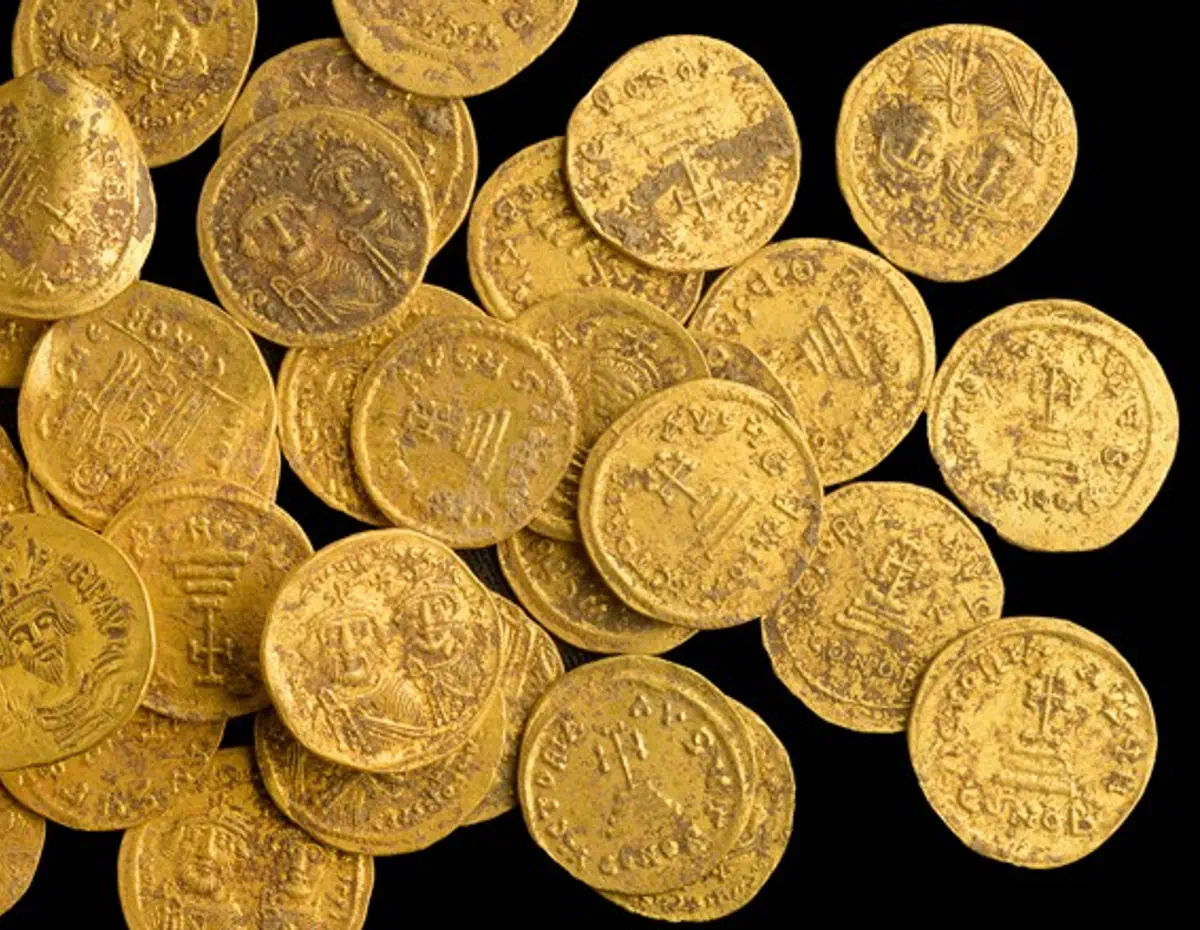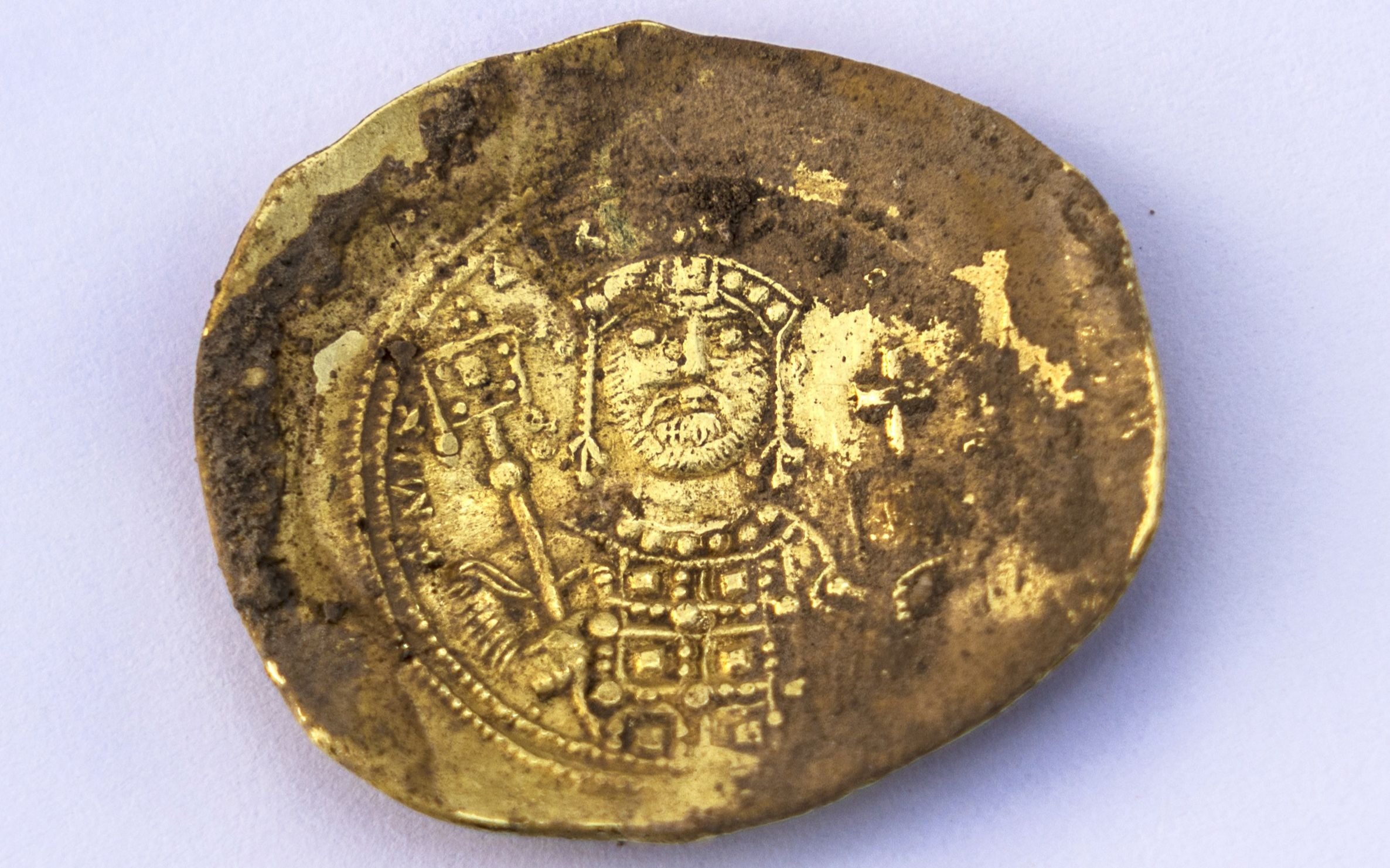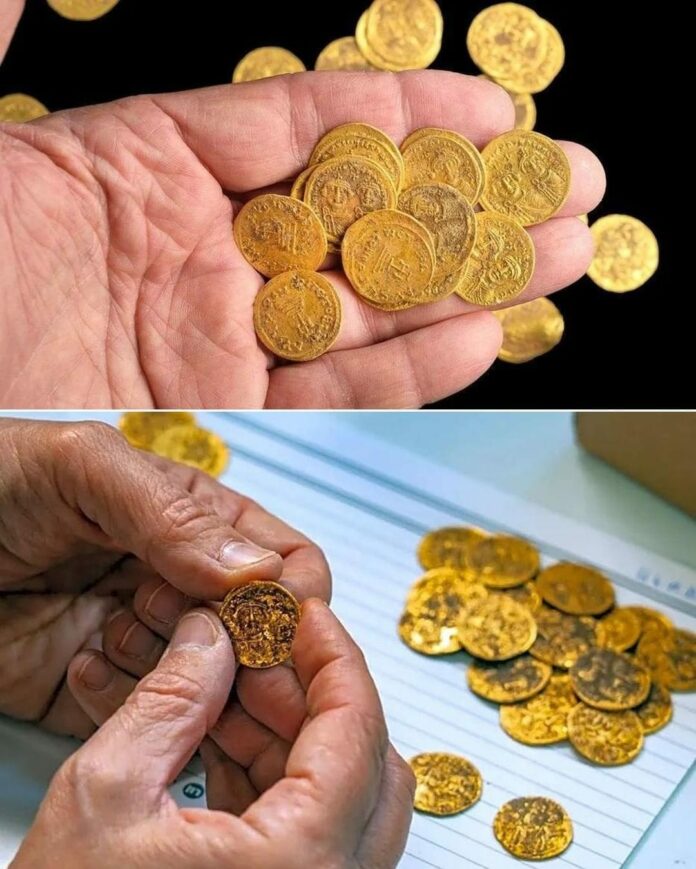The ancient site of Banias, known in biblical times as Caesarea Philippi, has long been a place of historical significance. Recently, a remarkable archaeological discovery has shed new light on the region’s past, offering a glimpse into the tumultuous transition from Byzantine to Islamic rule. During a salvage excavation at the Banias Nature Reserve, the Israel Antiquities Authority (IAA) unearthed a hoard of Roman gold coins, providing invaluable insights into the final years of Christian dominance in the southern Levant.
Coins and Shifting Control

The discovery of the Roman coin hoard, consisting of 44 pure gold coins minted under the Byzantine emperors Phocas (r. 602–610 C.E.) and Heraclius (r. 610–641 C.E.), is an incredible find in its own right. However, these coins also serve as a tangible link to the region’s complex history during a pivotal moment of political and religious upheaval.
According to excavation director Yoav Lerer, the hoard was likely hidden for safekeeping by its Byzantine owner, who sought to protect their wealth as the advancing Arab forces began to conquer the region in 635 C.E. “The discovery reflects a specific moment in time when we can imagine the owner concealing his fortune in the threat of war, hoping to return one day to retrieve his property,” Lerer explains. “In retrospect, we know that he was less fortunate.”
The sheer quantity and quality of the gold, weighing approximately 6 ounces, also provide valuable insights into the economy of Banias during the final years of Byzantine control. This hoard offers a glimpse into the city’s prosperity and the wealth of its inhabitants, a stark contrast to the imminent change in power that was to come.
Coins of Heraclius and the Changing Times

Of the 44 coins discovered, the majority date to the reign of Emperor Heraclius, a complex figure who spent much of his time fighting against the Sasanian Persians and the emerging Arab forces. During this tumultuous period, the Levant and Egypt changed hands between these three powers several times, before ultimately being conquered by the newly united Arab campaign.
Interestingly, the coins minted under Heraclius also provide a unique perspective on the emperor’s personal life. According to IAA numismatist Gabriela Bijovsky, in Heraclius’s early years as emperor, “only his portrait was depicted on the coin, whereas after a short time, the images of his sons also appear. One can actually follow his sons growing up—from childhood until their image appears the same size as their father, who is depicted with a long beard.”
These subtle changes in the coin imagery offer a tangible connection to the political and dynastic transitions occurring within the Byzantine Empire during this critical period in history.
Banias: From Canaanite Temple to Byzantine Church

The archaeological site of Banias, where the Roman coin hoard was discovered, has a rich and multifaceted history. The area around the natural spring was first settled by the Canaanites, who built a temple to the god Baal at the site. During the Hellenistic period, the site became associated with the Greek god Pan, giving it the name Panias.
In the early Roman period, the site was greatly expanded under Herod the Great, who built a palace and temple there. His son, Philip II, later rebuilt the city and renamed it Caesarea Philippi in honor of Emperor Augustus. According to Christian tradition, Banias was the site where the Apostle Peter proclaimed Jesus to be the Messiah and received the keys to heaven and hell (Matthew 16:13–17).
During the Byzantine period (c. 324–634 C.E.), a large church was built near the spring, possibly associated with the events mentioned in the Gospel of Matthew. It is in this context that the recently discovered Roman coin hoard provides a tangible link to the city’s eventful past.
Conclusion
The discovery of the Roman coin hoard at Banias is a remarkable archaeological find that sheds new light on the region’s tumultuous history. The hidden cache of pure gold coins, dating to the final years of Byzantine control, offers a glimpse into the wealth and economy of the city, as well as the anxiety and uncertainty that must have gripped its inhabitants in the face of the advancing Arab forces.
Beyond the intrinsic value of the coins themselves, this discovery also serves as a powerful reminder of the rich and complex past that lies buried beneath the surface of the Banias Nature Reserve. As the IAA continues to explore and uncover the secrets of this ancient site, we can expect even more fascinating insights into the region’s pivotal role in the transition from Christian to Islamic rule in the southern Levant.
